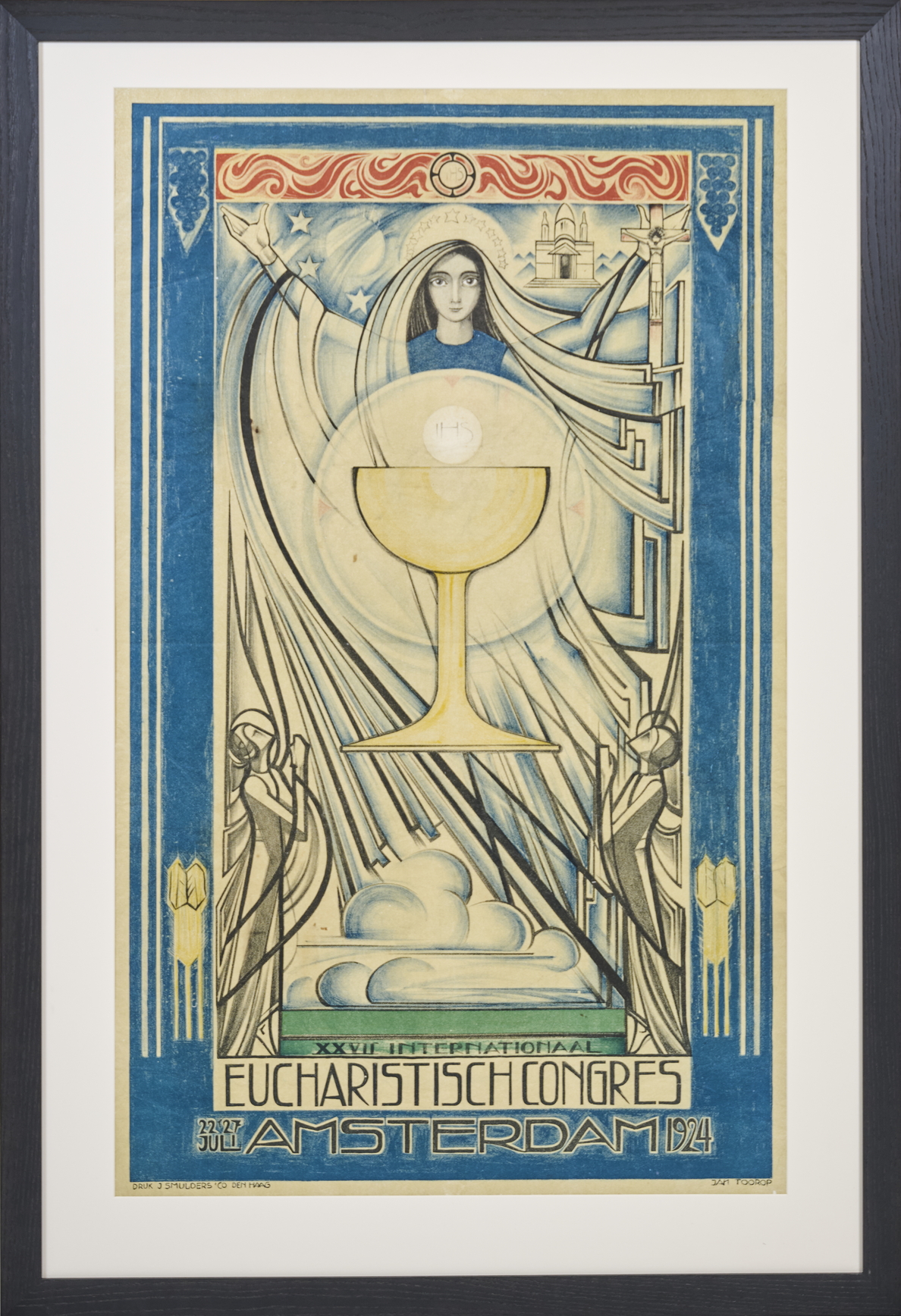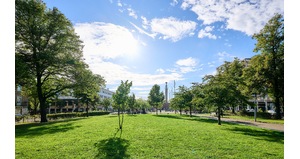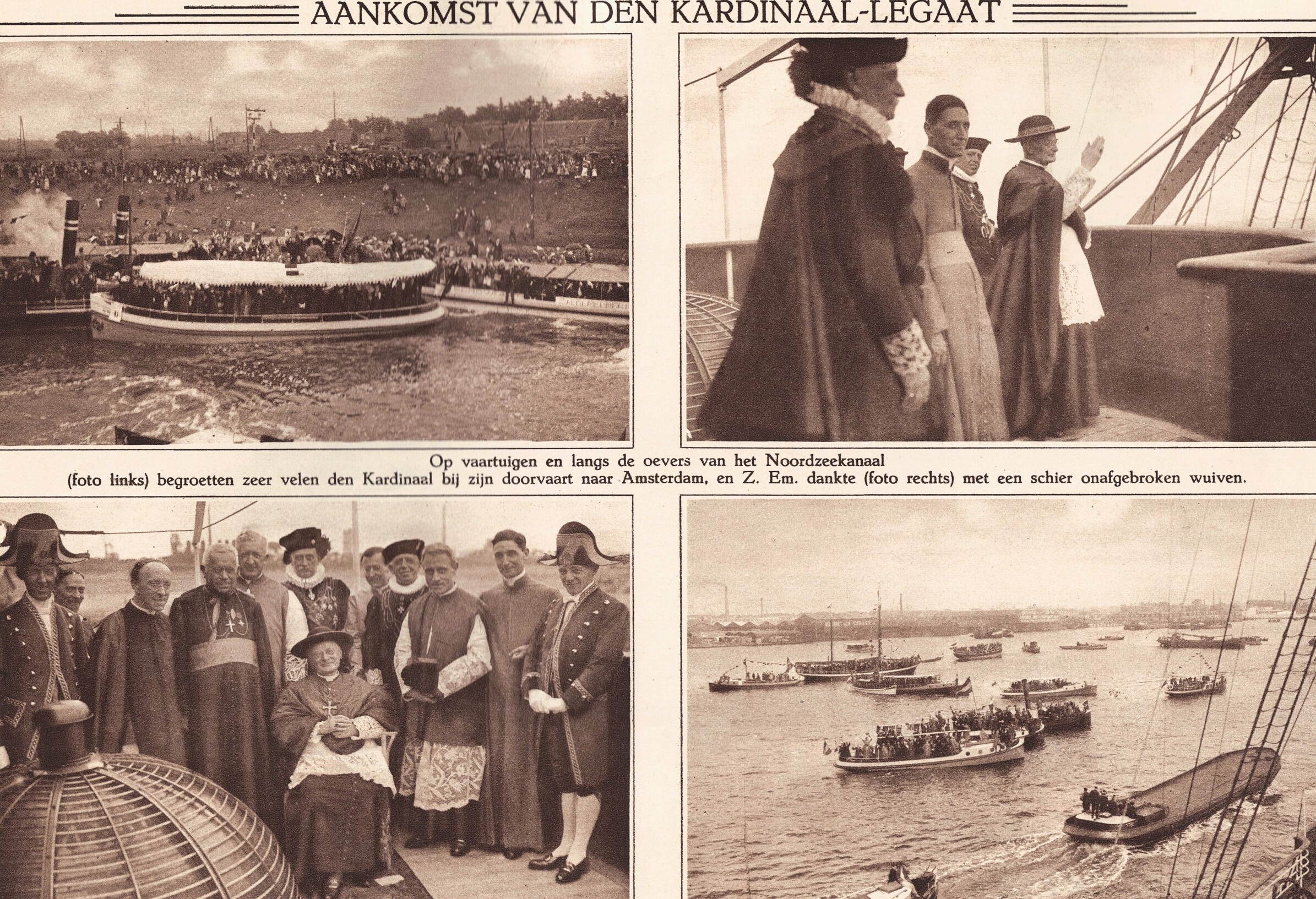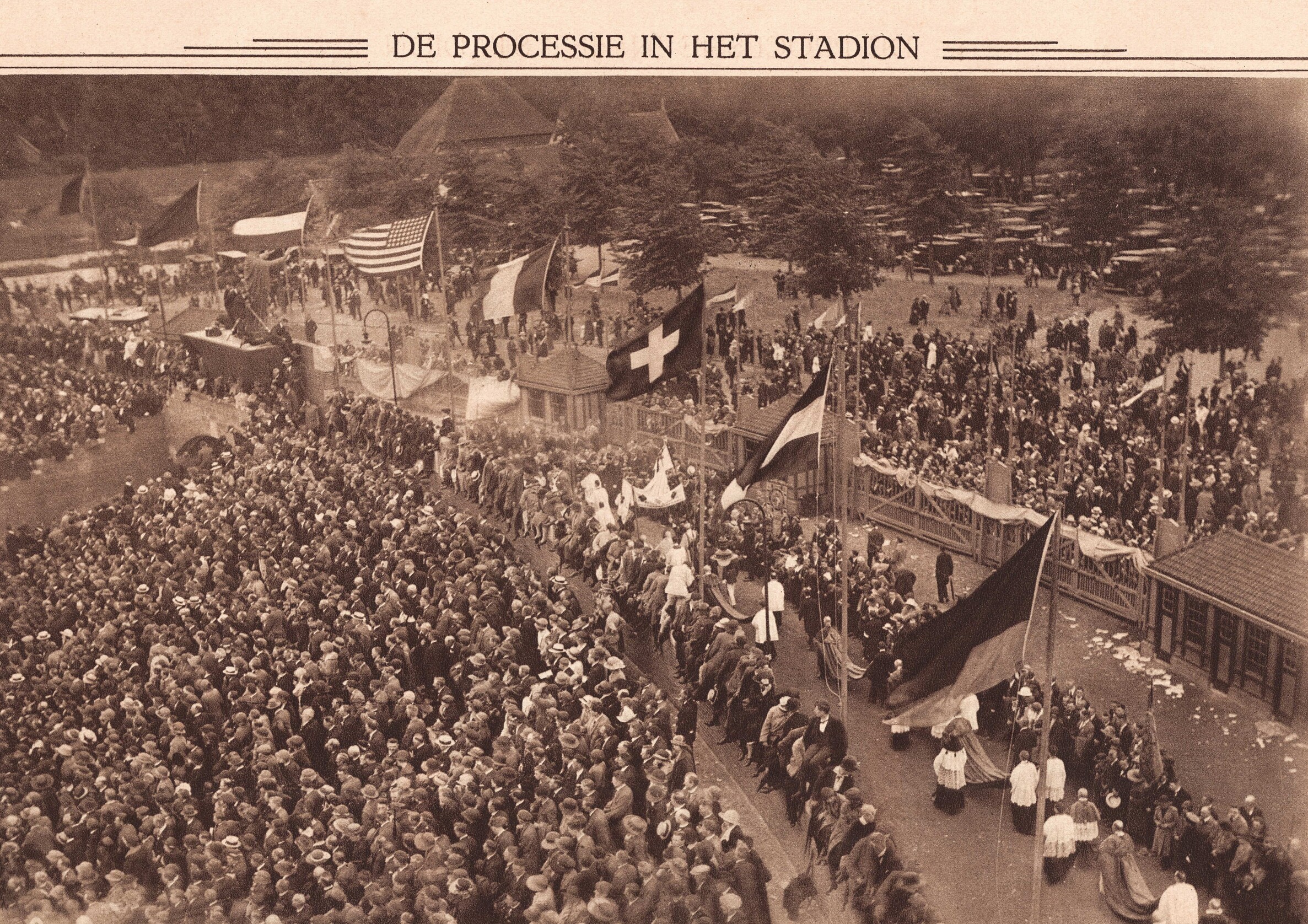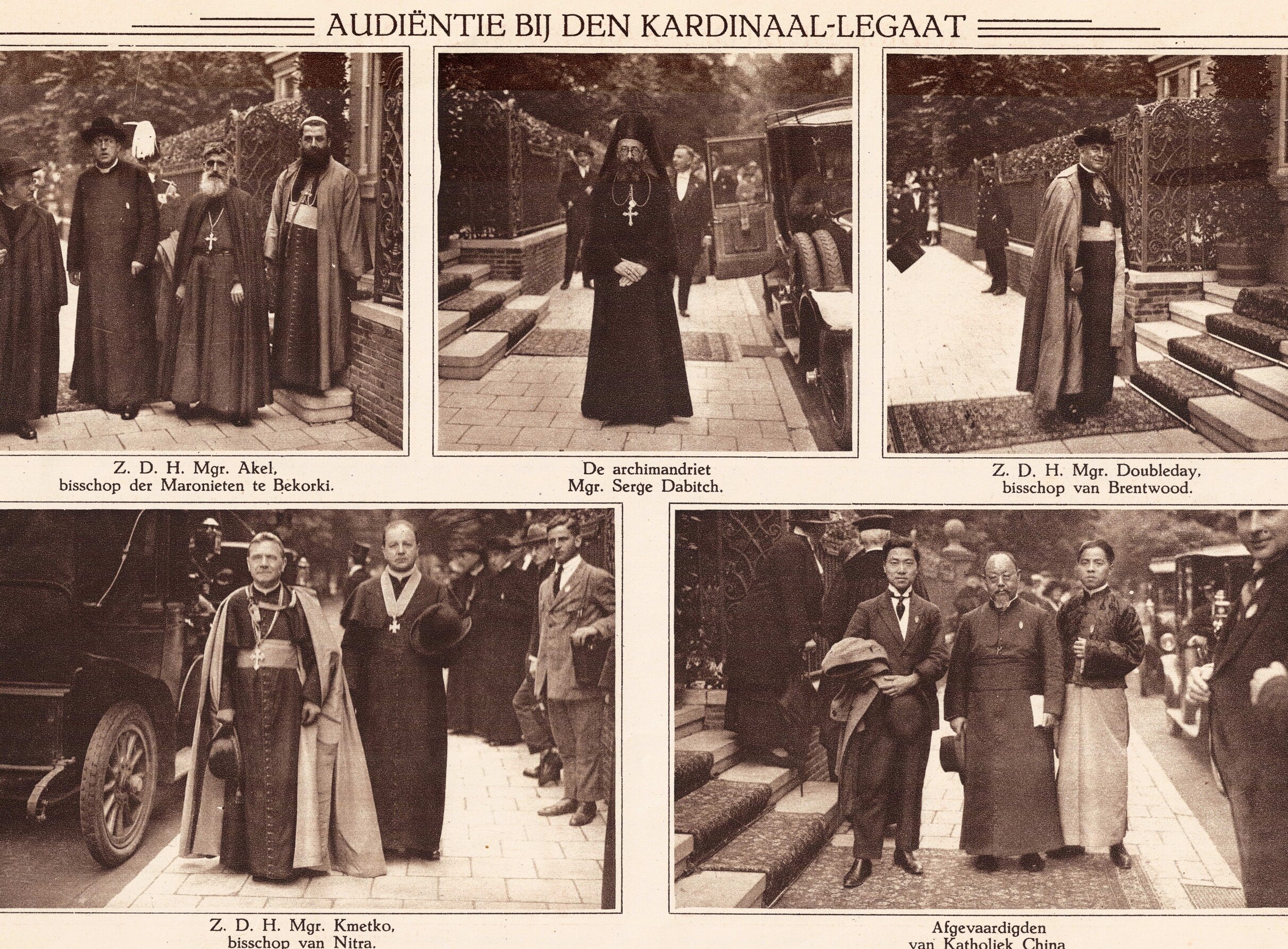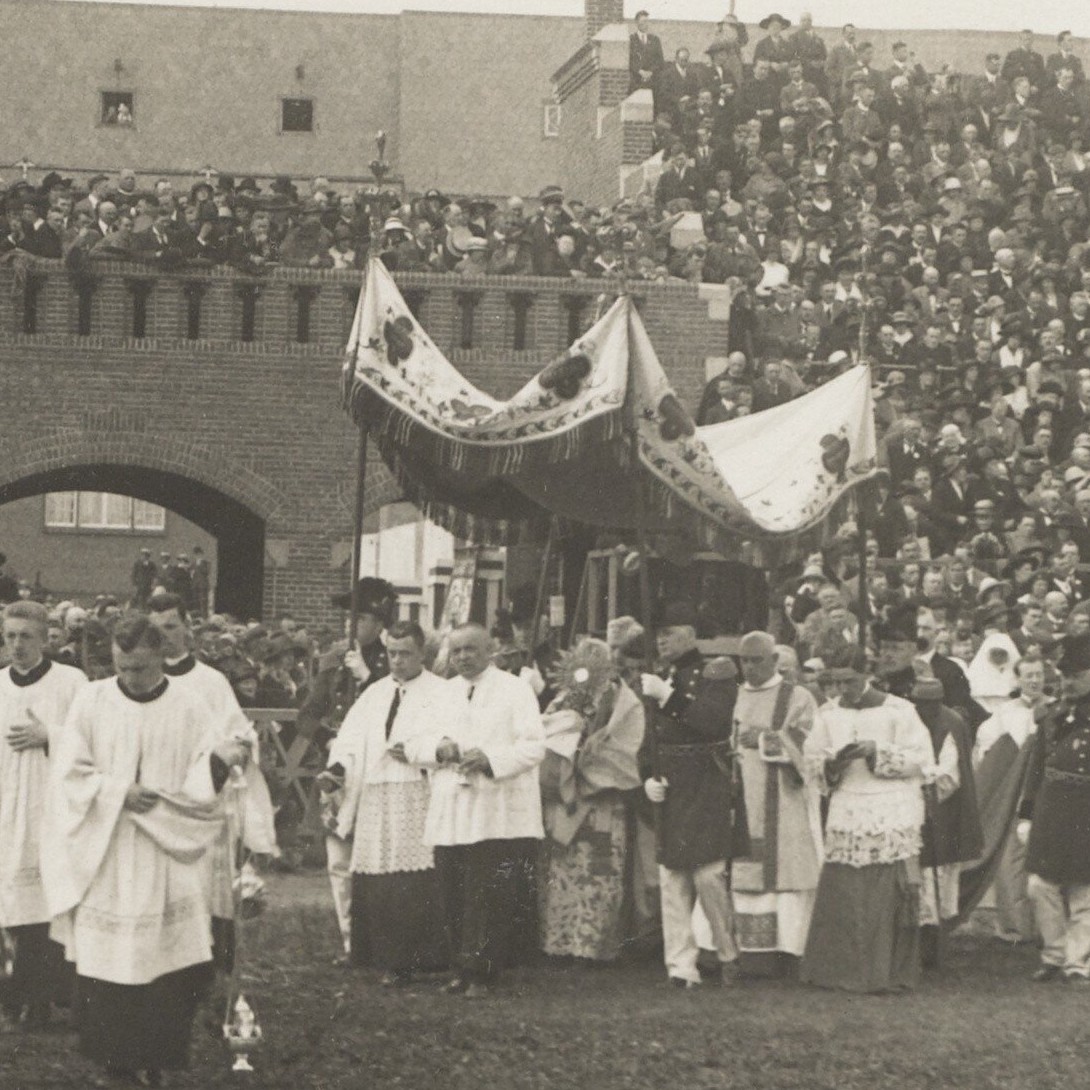Large Catholic manifestations remain a sensitive issue in 1924. As a result, an international Catholic congress must take place in The Old Stadium, far outside the city center.
Location
Het Nederlandsch Sportpark (The Old Stadium)
Stadionplein
Type
Sports venue
Religious community
Rooms-Katholieke Kerk
Object
Poster in Art Nouveau style displaying eucharistic symbols: a chalice and a host
Maker and date
Jan Toorop
1924
Visit
The poster is not on display, The Old Stadion was demolished in 1929
To promote the International Eucharistic Congress, which was to take place in Amsterdam in 1924, Art Nouveau artist Jan Toorop was commissioned to design a poster. In his composition the Virgin Mary and the symbols of the Eucharist—a chalice with a host above it—take center stage.
Amsterdam in 1924 was not an obvious location for a major international Catholic event. Following the Alteratie, the public expression of the Catholic faith had even been prohibited there. It was not until 1795 that Catholicism was granted legal equality with Protestantism in the Netherlands, under the influence of the French Revolution. Nevertheless, the Netherlands maintained a ban on processions for a long time, and large Catholic manifestations remained anything but welcome in the streets of Amsterdam.
Alteratie
In 1578, the Catholic city government of Amsterdam was deposed. A Protestant city council took its place. The consequence of this change (Alteratie in Dutch) was that, from that moment on, the Reformed Church became the only church that was allowed to manifest itself publicly. Catholic churches and monasteries were confiscated and given new functions.
Host
From the Latin word hostia, meaning sacrifice, is bread used during the Catholic Mass. It is usually shaped like a round piece of unrisen bread, referring to the unrisen bread which Jesus Christ used at the Last Supper. Catholicism teaches that the host, along with wine, are transformed during holy mass into the body and blood of Jesus Christ through the words of a priest. This is called consecration. The consecrated hosts are also called the Blessed Sacrament.
International Eucharistic Congress
An International Eucharistic Congress is a large-scale Catholic gathering aimed at strengthening the faith community and deepening the celebration of the Eucharist. Since 1881, these congresses have generally been organized every four years, each time in a different location. The International Eucharistic Congresses last about a week and consist of various elements, including study sessions, a Eucharistic procession, and adoration of the Blessed Sacrament.
French Revolution
The French Revolution (1789–1799) and the establishment of the Batavian Republic in 1795 brought about a profound transformation in the religious landscape of the Netherlands. The separation of church and state led to the abolition of the privileged position of the Reformed Church. Newly introduced principles of equality and civil rights expanded religious freedom. Catholics regained the right to openly practice their faith and to build churches, thus ending their long-standing social marginalization.
Since the beginning of the nineteenth century, the Catholic community in the Netherlands worked hard toward its emancipation. Organizing the International Eucharistic Congress in Amsterdam marked an important step in that process. However, the distinctly Catholic character of the congress also caused tension. The Protestant community was concerned about the location and the potentially disruptive exuberance of the Catholic ceremonies. In order to maintain peace, it was decided to hold the major celebrations—including an impressive procession—in The Stadium, well outside the city center and out of sight of those who might take offense. Even so, there was suspicion toward the many Catholic dignitaries visiting the city during the congress. The event was documented in an extensive photo album and in a film report, as testimonies to this exceptional public display of the Catholic faith in the city.
Although the Eucharistic Congress in Amsterdam unfolded in a relatively modest and subdued manner, for Dutch Catholics it was seen as an important milestone in their emancipation and as a step toward liberation from Protestant tutelage.
Hanna Blommers
Student minor Religieus erfgoed in Amsterdam (Vrije Universiteit/Reinwardt Academie), 2022
Last edited
July 24, 2025
Affiche voor het Internationaal Eucharistisch Congres van 1924 in Amsterdam, Jan Toorop, 1925, 105x65cm. Collection Our Lord in the Attic Museum.
Exterior: photography Robert Westera
Aankomst van den kardinaal-legaat, digital photo from: Gedenk-album herinnering aan het XXVIIste Internationaal Eucharistisch Congres gehouden te Amsterdam 22-27 juli 1924 (N.V. Drukkerij De Spaarnestad Haarlem, Ars Catholica Leiden 1924).
De processie in Het Stadion, digital photo from: Gedenk-album herinnering aan het XXVIIste Internationaal Eucharistisch Congres gehouden te Amsterdam 22-27 juli 1924 (N.V. Drukkerij De Spaarnestad Haarlem, Ars Catholica Leiden 1924).
Audiëntie bij den kardinaal-legaat, digital photo from: Gedenk-album herinnering aan het XXVIIste Internationaal Eucharistisch Congres gehouden te Amsterdam 22-27 juli 1924 (N.V. Drukkerij De Spaarnestad Haarlem, Ars Catholica Leiden 1924).
Poels, Vefie, ‘Rooms triomfalisme in de Amsterdamse straten: De betekenis van het 27e Internationaal Eucharistisch Congres (22-27 juli 1924) voor de ontwikkeling van het Nederlandse katholicisme’, DNK : Documentatieblad voor de Nederlandse kerkgeschiedenis na 1800 43 (2020) 95-133.
Online sources
Gedenk-Album van het Internationaal Eucharistich Congres
Last visited 23-07-2025
Katholiek Nieuwsblad - Een Mokums mirakel als centrum van de wereldkerk
Last visited 24-07-2025


